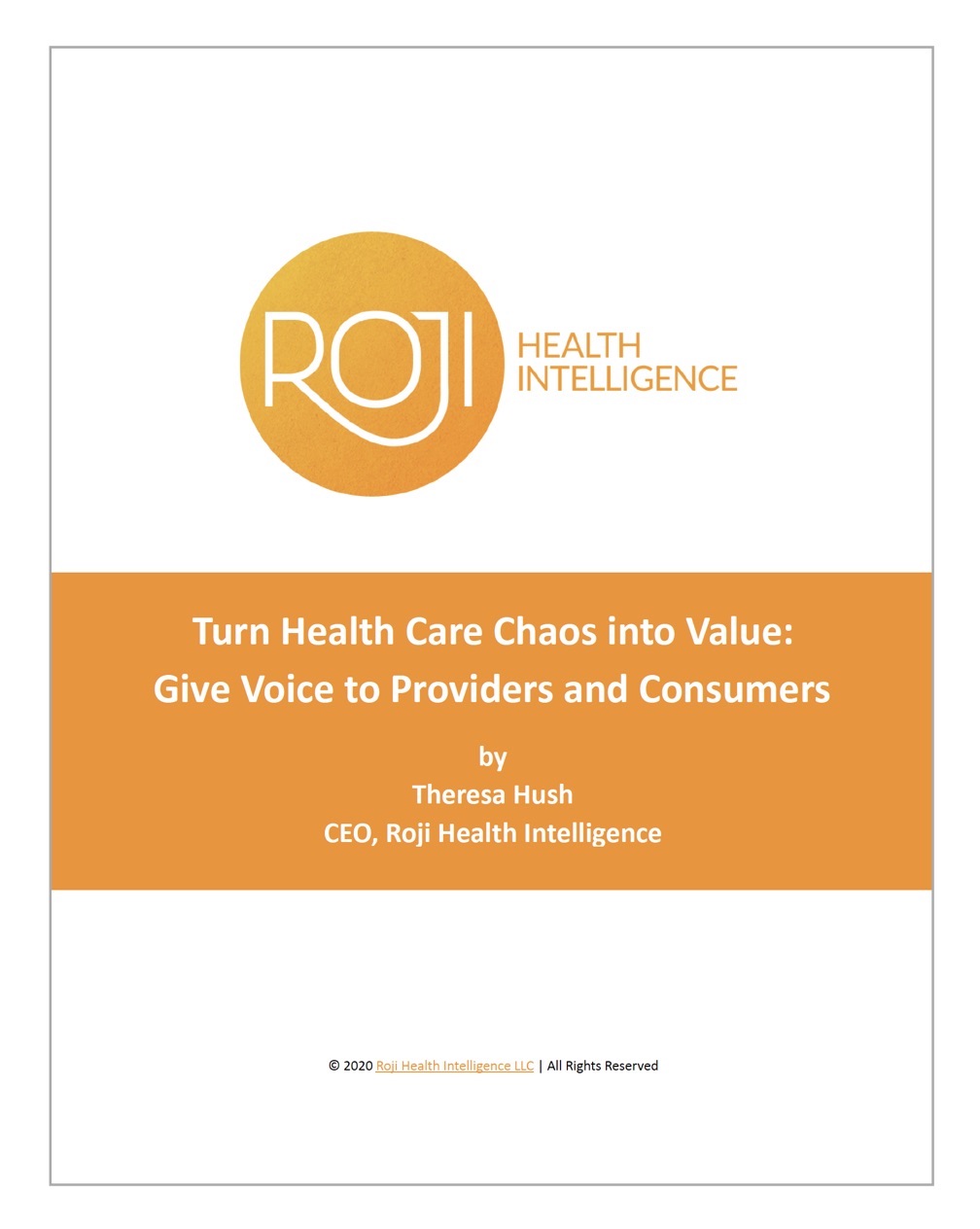
In the intense ramp-up to accepting Value-Based Health Care payment models that include financial risk, providers have implemented an array of technologies and programs to improve cost performance. They are in a race against time. Capitation is re-emerging as a dominant payment type under Medicare Value-Based Primary Care Models and commercial contracts. Alternative Payment Models demand payback for excess costs.
In the crunch, however, the most important health care goal is getting lost: how to reduce long-term costs while improving patient outcomes. The most effective solutions will require more than just technology. They will require provider-consumer partnering, facilitated by consumer-focused technologies.
Popular Technologies Aim to Identify “Problem” Providers and Patients
Analytics, artificial intelligence (AI) solutions, population health, and cost-focused technologies are all in play as providers try to build on EHR functionalities and their financial systems to use valuable patient data. Their top cost control priorities are spotting patients and providers who may generate “excessive” costs compared to targets, and to change those trends.
Most adopted technologies are anchored on these techniques to identify and reduce costs:
- Analytics to identify high-risk patients or frequent utilizers, including predicted cost and risk stratification, and the application of higher-touch interactions, case management, and referrals;
- Population health technology to meet needs of patients with high cost or risk, to fill gaps in care and connect with patients approaching targeted limits for cost or utilization; and
- Financial/administrative technology to perform and distribute cost results, such as calculation of total costs per patient, comparison of episodic costs by patient risk and by provider, and identification of common elements to cost overruns.
Other technologies may be introduced to reduce costs of services while stimulating growth, such as telemedicine and interoperability with post-acute facilities or regional providers. There are also new technology-enabled solutions to gather data and categorize risk associated with social determinants, to make population health initiatives more effective.
Can Current Technologies Help Reduce Long-Term Patient Costs—With Better Outcomes?
Implementation of technology is critical for providers to be able to fill the gaps in cost knowledge and proceed with interventions. The solutions we’ve cited have enabled providers to move forward with Value-Based Health Care implementation. But the time-critical question as Value-Based Health Care evolves into provider financial risk is this: Can these technologies actually help to reduce patient health care costs in the long term? The answer is not obvious.
One problem is that many efficiency gains generate only one-time gains in cost performance. More savings must be found each year to override the naturally occurring rise of salaries, new clinical technologies, and investments required to keep pace. Results for solutions focused on high-risk or high-cost patients have been recently called into question by randomized trials.
But there is a larger problem too, which is that high costs—usually associated with treatment intensity— and good outcomes are not necessarily connected. New technologies with very high initial costs, such as genomic sequencing, immunotherapy, and pharmaceuticals may not produce expected results for patients. Incentives under Fee-for-Service and physician training can lead to decisions to intervene when clinical benefits do not justify the cost, either in dollars or for the patient.
This raises the fundamental question: how to tie medical decisions and the benefit-cost of therapies to individual patients. While we are looking for predictable costs, we may be missing the big question of how to make medical decisions that produce value for the specific patient’s condition, goals, and circumstances.
Technology to Manage Costs Operates in a Closed Provider Environment
The audience for current Value-Based Health Care technology is providers. Those providers are conversing with each other and about patients. They’re presuming that they’re in control of patient costs and medical decisions. While there is a great deal of discussion of patient engagement, most of that engagement is focused on patient compliance and responding to providers.
The reality, however, is that provider performance can improve only when consumers change how they approach their health issues, how they make medical decisions, and the information they have available to do so.
Value-Based Technology Investments Must Help Providers Guide Consumers
Controlling costs long-term will require a change in medical decision-making so that the costs and benefits are reviewed and determined by individual patients and their support team. Only a consumer can realistically determine affordability and ability to comply with a therapy process, and weigh the options of various therapies—and since consumers are now bearing a much larger share of the cost, they should justly have both the information and guidance to make decisions based on data.
Providers will need to guide consumers in all aspects of that process, with more sophisticated information on their conditions and their options. This will involve both provider- and consumer-facing technology that addresses each stage of the health care decision-making process. Consumers currently are facing an opaque process for making decisions, knowing neither the science, nor evidence for therapies, nor the expected costs.
The basics for consumer-focused technologies include milestones in the process of those decisions:
1. Patient designated support team communication channel
Integrating communications for the provider clinical team, patient, and the patient’s designated support team members is essential for ensuring that there is an organized medical decision process. Most technology fragments this process so that providers have access (on demand) to patient clinical data. But aside from portals that parse limited data to the patient, the patient’s support team is excluded and there is little opportunity for dialogue leading to decisions.
2. Health care education and literacy improvement
Most patients need to become more medically literate regarding their conditions. As a precursor to the patient being able to understand options and make decisions, providers must be able to direct consumers to resources to prepare them with basic understanding of medical terminology, physiology, and pathology associated with their conditions.
3. Patient access to evidence-based findings for treatments
Providers will need to establish different processes for patients to articulate their goals and decide treatments based on discussion. Emerging technology is gathering data on the benefits and harms of therapies revealed through clinical trial data. Helping consumers make informed decisions will be a necessary element of managing provider risk.
4. Transparency of costs associated with projected episodes of care, linked to eligible benefits
Providers have resisted transparency beyond price lists, but these are of little use to consumers because they don’t capture all services in an episode.
5. Patient-reported outcomes and services feedback
Patient outcomes are usually collected on a short-term basis, while results are usually seen over a much longer time frame. It will be important for providers to go beyond typical survey instruments and really understand what the patient’s experience is like, in order to retain the patient.
Theoretically, providers should be able to improve their Value-Based cost performance by developing a more collaborative approach to consumers. Like other methods of cost reduction, this must be implemented and tweaked. But it deserves top priority.
We are in the midst of a huge medical cost shift to consumers, while often narrowing their benefits. Consumers are showing that they are interested in becoming better stewards of their health and health care. But they don’t have right tools. Technology is a means of cementing that provider-patient collaboration into stronger relationships by delivering data, evidence-based options, and transparency.
Founded in 2002, Roji Health Intelligence guides health care systems, providers and patients on the path to better health through Solutions that help providers improve their value and succeed in Risk.
Image: Jens Johnsson






